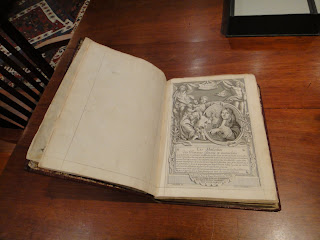How to Advertise a Library
posted by Jeremy Norman @ 9:18 AM
66 Comments
![]()
![]()



posted by Jeremy Norman @ 8:33 AM
33 Comments
![]()
![]()




Ever the self-promoter, Mauriceau issued his book with a frontispiece drawn by Antoine Paillet and engraved by Guaillaume Vallet, which included a cameo portrait of himself and a notice in small print at the foot of the page with the address of his office where he could be consulted as well as its cross-street, just to be sure people could find it. Incidentally you can enlarge all the images in this blog piece, and if you enlarge the image of the frontispiece you can pretty well read Mauriceau's address at the foot of the page. Advertising a medical practice like that at the foot of frontispiece a serious treatise was a unusual in the seventeenth century.
Mauriceau published a dedication in his book "A tous mes chers confreres: Les Maitres Chirurgiens Jurez de la Ville de Paris." This was the illustrious Confraternite de Saint-Come, established in the 13th century.
The dedication copy of the book, which Mauriceau presented to the Paris surgical society, was bound in contemporary red morocco, gilt, emblazoned on the front and back cover with an inscription that read "Ce Livre Appartient a la Compagnie des Maistres Chirurgiens Jurez de Paris." At the end of the printed dedication Mauriceau signed with his paraph. Later he noted in manuscript the publication of each new edition, in 1675, 1681, and 1694, by writing a notice to that effect and signing it, thus signing the final page of the dedication a total of four times! In addition, all pages of the text were red ruled by the binder--a highly unusual practice for a medical book. If you click on the image of the autograph inscriptions you will be able to enlarge it well enough to read the details and see how each inscription is written in a slightly different color ink.
posted by Jeremy Norman @ 5:35 PM
25 Comments
![]()
![]()


posted by Jeremy Norman @ 6:39 PM
26 Comments
![]()
![]()


 An intellectual in Hollywood?
An intellectual in Hollywood?The British newspaper the Telegraph has a slideshow of Olympia Le-Tan's clutches, with a peek inside Lolita with its snazzy purple-and-green print cover.
posted by Jeremy Norman @ 5:04 PM
23 Comments
![]()
![]()

posted by Jeremy Norman @ 9:16 AM
40 Comments
![]()
![]()